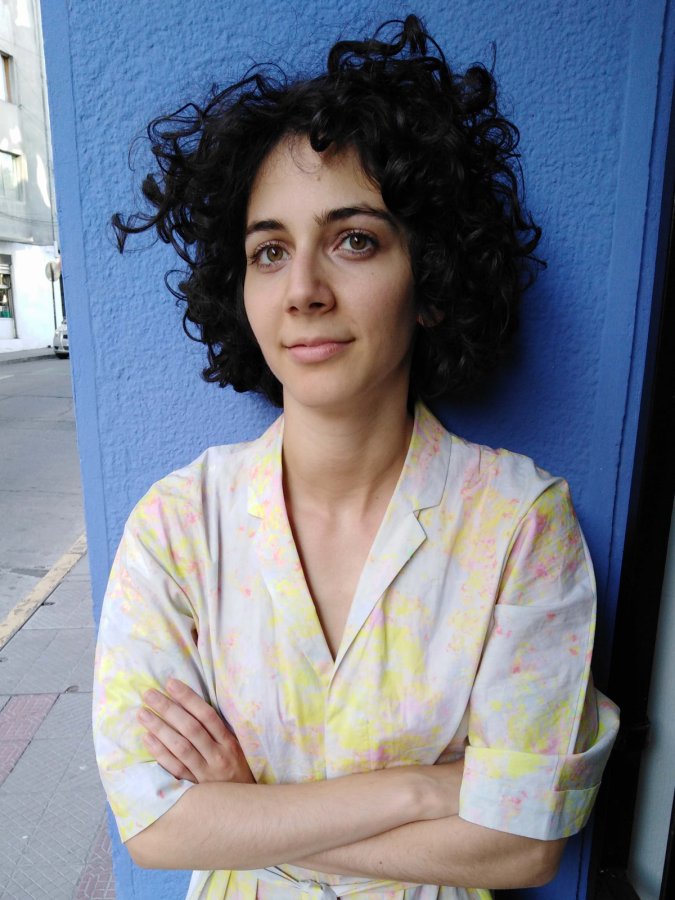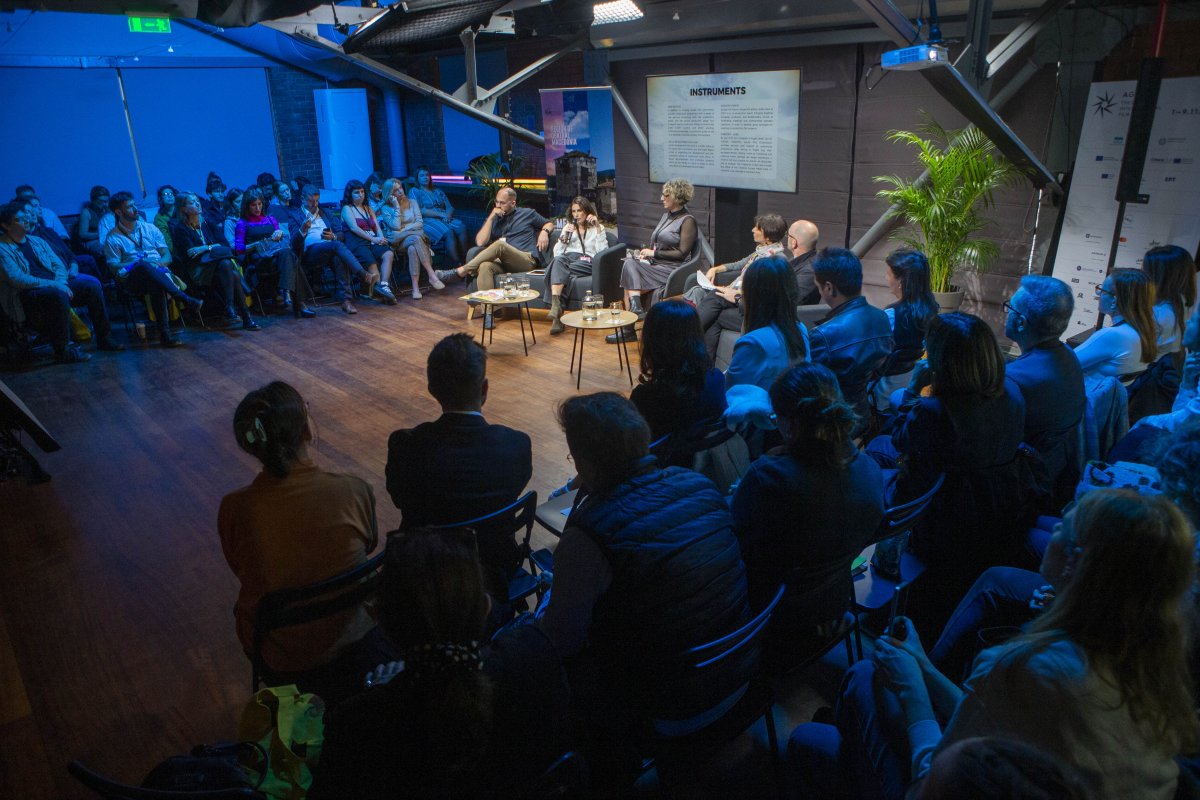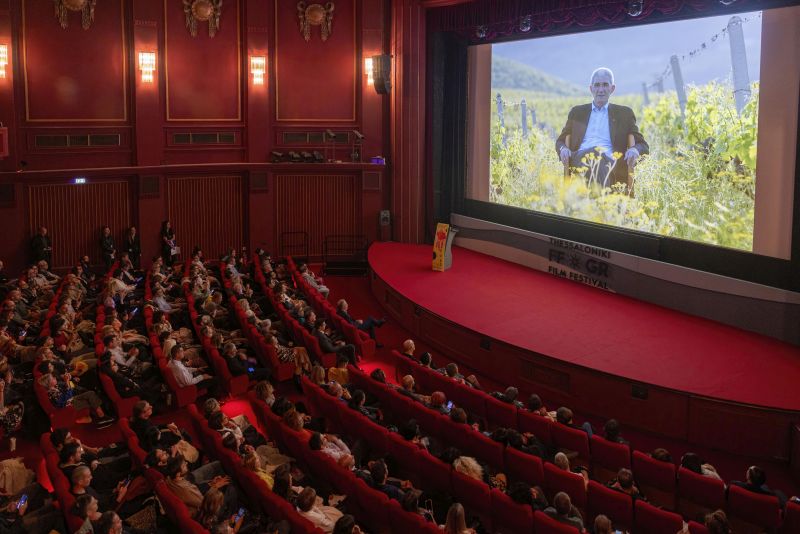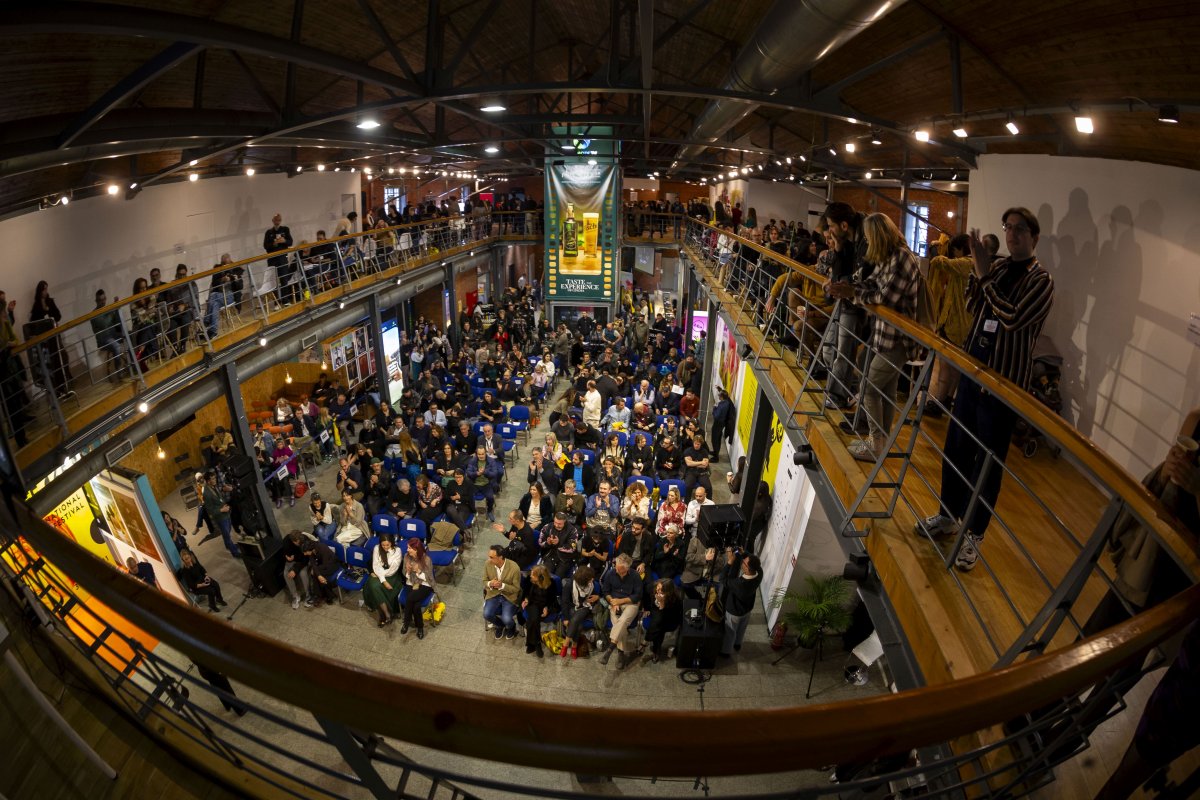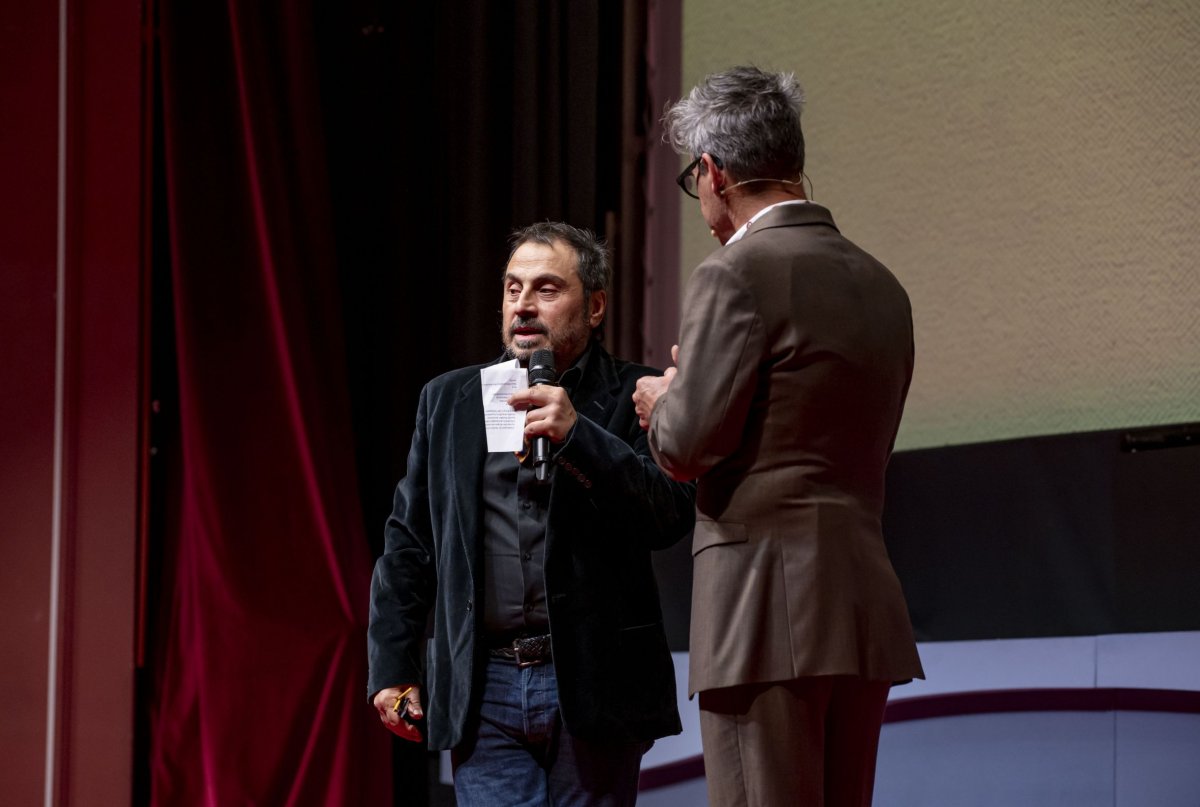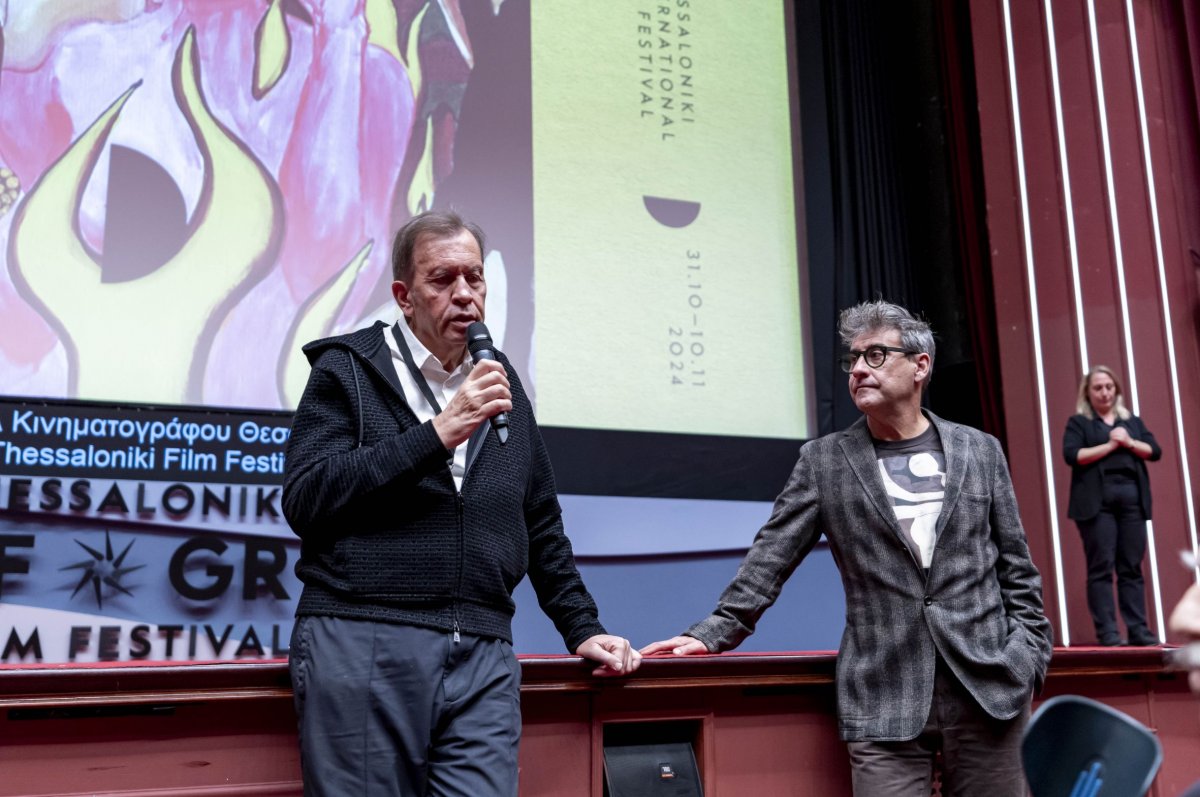COSMOTE TV’s time-honoured special screening took place on Saturday 9 March, at Frida Liappa theatre, offering the audience the opportunity to enjoy the premiere of the first of four episodes of Kostas Karydas’ documentary Underwonder, introducing us to the impressive, but also inaccessible world of underwater caves in Greece. Following a team of experienced cave divers, led by George Vandoros, each episode explores a new underwater cave, revealing mysteries and stories hidden below sea level. The cavedivers portrayed in the documentary, the director and members of the crew, as well as COSMOTE TV's executive producer Faye Tsitsipi and Executive Director Dimitris Michalakis, attended the screening.
The film was prefaced by Orestis Andreadakis, the artistic director of the Festival, who welcomed the audience by saying: “I thank COSMOTE TV for its support over the last seven years. I am very happy about this film because it captures the underwater world, I could never watch from a close distance.” Kostas Karydas, the film's director and Faye Tsitsipi, COSMOTE TV's production manager, took the floor. “It is very difficult to see these underwater worlds we tried to show you through the eyes of divers, we wanted to bring to light the underwater wonders of Greece,” Karydas said.
Ms. Tsitsipi stressed: “We are very happy to be here again with a documentary premiere, different from what we have done so far. This is about COSMOTE TV’s fresh and innovative take on documentaries, focusing on Greece and its history. The documentary team offered us a fantastic product, consisting of four episodes. Today we unveil the first one, focusing on Lake Vouliagmeni. We have three more episodes to be screened on COSMOTE TV, scheduled for May. It is about a trip to Diros, Amfitriti and Crete.” After the screening, a Q&A with the team of the film followed.
In a question about the fauna in the cave and the water salinity, George Vandoros, cave diver, replied: “The water is brackish in the first forty metres below sea level and then it is fully sea. Fauna exists only in places where there is light, as for example fish, shells and some anemones. There is no life in the dark spots of the cave."
"Even at a hundred metres below sea level you will find fossilised plants, which is extremely surprising, as you will see helictites, once living organisms that have turned into fossils. With the help of COSMOTE TV, we managed to complete four episodes, travel around Greece and get to know another past through its underwater caves. There are caves most people do not know about, revealing another side of Greece. We reveal, for example, that the sea level was much lower and this is illustrated in graphics. Also, in most parts of Greece one could find proof of wildlife. We find fossils of panthers, lions, elephants and hippos,” said Andreas Kouris, cave diver and producer.
Kostas Karydas, the director, in a question on how the idea of the film came about, explained that “this team has been diving for many years and they wanted to make a documentary to show the world all these awesome things they see underwater. Andreas found me at some point, told me about the project and we started working on it. I didn't know about diving at all and filmed it as a spectator.” Afterwards, Mr. Kouris added: “The pandemic essentially led us to make the documentary, because we were looking for a creative way to make use of the time we had on our hands. At first, we thought of something more amateur, but the material was so good that in a conversation I had with Dimitris Michalakis, I convinced him to move from the pilot to an entire episode.”
Regarding the divers’ equipment, Mr. Vandoros said that more important than any equipment is proper training and proper dive planning. “We are usually three divers with a support group of two other divers. Therefore, we have practised helping each other. Your co-divers are a second mind that helps you think right. All the preparation is done so that each team, at its own level, is completely autonomous. The support group is there to make our lives easier by carrying the equipment we don't need. The guys in the group are so well trained that as a director I couldn't find any drama in the story,” Mr. Karydas added humorously.
Regarding the criteria for choosing these particular filming locations, Mr. Kouris stressed: “We searched to find the caves that had a story to tell about what Greece was like geologically tens of thousands of years ago. Our country has too many caves and unfortunately we had to choose only four of them, relatively accessible because we had some limitations both in terms of time and budget. Diros is amazing, a cave of unique beauty, Amfitriti is in the centre of the Cyclades, while in Chania no-one has ever captured the cave the way we did. In the second season we would like to visit other caves, for example the cave in Kefalonia."
Regarding the decompression process, according to George Vandoros “decompression does not last for six or seven hours in all cases, as in the one you saw. The main thing is the combination of depth and time spent on the seabed. We gradually emerge to a depth our calculations have determined that our body can tolerate the pressure of gases, which try to come out through breathing. The process is done with diving computers giving us the information through an algorithm. Our own experience is also important, allowing us to make some changes if needed,” he concluded.




